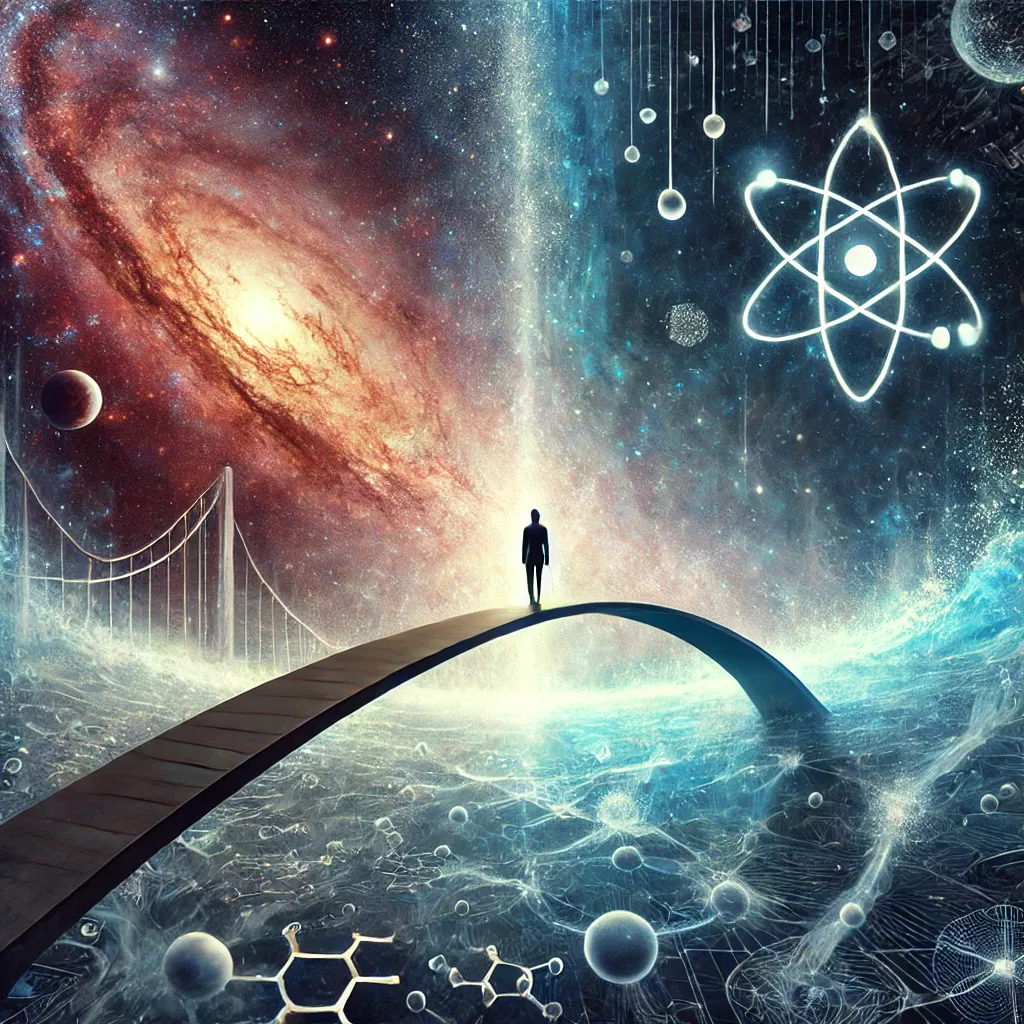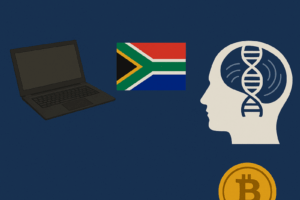
The Curious Place of Human Consciousness in the Universe’s Scale
Introduction
Imagine a single dot on a page, so small it’s on the edge of what we can visually perceive. Now imagine that this dot sits right in the center of a vast spectrum of scales—between the largest observable structures in the universe and the tiniest measurable distances in physics. This concept isn’t just a quirky observation; it raises profound questions about our place in the universe, and perhaps even about the nature of consciousness itself. By examining the tiniest unit we know—the Planck length—and how it compares to scales we’re familiar with, we might just stumble upon some of the most tantalizing questions science and philosophy have to offer.
The Planck Length and the Dot on a Page
The Planck length, about 1.62×10−351.62 \times 10^{-35} meters, is incredibly tiny—so small that it’s theorized to represent a fundamental limit to the size of meaningful space and time (Smolin, 2001). This distance is so far below human perception that it’s hard to grasp just how minuscule it really is. But here’s a way to conceptualize it: if the Planck length were compared to a dot on a page (about one millimeter in diameter), then that dot would be to the Planck length what the observable universe is to that dot. In other words, there exists an entire scale between the sizes we perceive every day and the smallest meaningful unit of reality.
Our visual perception is optimized for scales around the size of that dot. So, in a sense, we sit precisely in the middle, between the smallest scales that physics considers and the largest cosmic scales we observe in astronomy. This isn’t just a numerical coincidence; it’s an intriguing reflection on how humans might fit into the grander scheme of existence (Greene, 2004).
The Scale of Consciousness
If we consider this middle-ground positioning of human perception, it raises questions about the evolution of consciousness and why we perceive the world as we do. Some philosophers and scientists have proposed that our sensory limitations might not be a drawback but an advantage—a filter, allowing us to navigate our environment effectively without the overwhelming data from the microscopic or the cosmic scales (Chalmers, 1995).
The philosopher David Chalmers (1995) called consciousness the “hard problem,” something not fully explainable by physical processes alone. One possibility is that our middle scale of perception could play a role in bridging physical reality and conscious awareness. The human mind, balanced between the microscopic and macroscopic worlds, might be uniquely situated to reflect on and understand the universe from both perspectives.
Are We the Universe’s Mirror?
There’s something poetically fitting in imagining ourselves as a bridge between these scales. We’re neither confined to the tiny scales of quantum mechanics nor stretched across the vast scales of cosmology. Instead, we sit at a central vantage point, a “mirror” that reflects and interprets both ends of the spectrum (Smolin, 2001). Could it be that our consciousness, with its ability to comprehend and conceptualize the universe on all levels, has evolved precisely because of this?
Some theorists even suggest that this middle-ground perspective might hint at the universe’s design, or at least the human mind’s unique relationship with it. Whether by cosmic accident or subtle design, our place in this “Goldilocks zone” of perception seems almost as if the universe has, in a way, created an entity capable of understanding it—or, at the very least, asking questions that keep pushing the boundaries of knowledge.
Conclusion
As we explore both the vast and the minute, we’re not just learning about the universe but also about ourselves. Our position in the scale of things, right between the incomprehensibly tiny and the overwhelmingly vast, suggests that human consciousness occupies a special role in the cosmos—a role that remains as mysterious as it is fascinating. Perhaps, by understanding more about these scales and our place within them, we might inch closer to answering some of the most profound questions about existence and consciousness.
References
Chalmers, D. J. (1995). Facing up to the problem of consciousness. Journal of Consciousness Studies, 2(3), 200-219.
Greene, B. (2004). The fabric of the cosmos: Space, time, and the texture of reality. Vintage Books.
Smolin, L. (2001). Three roads to quantum gravity. Basic Books.



